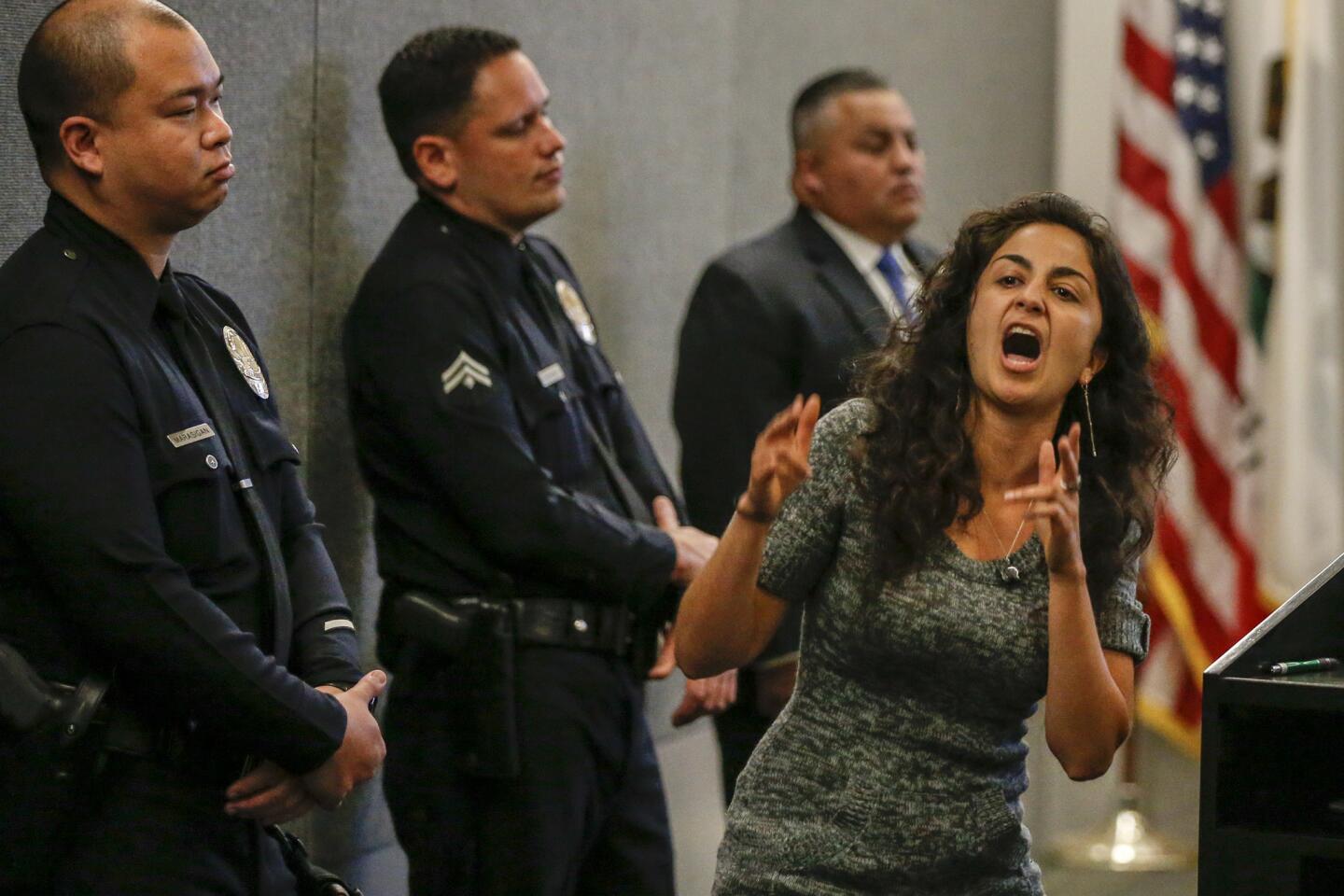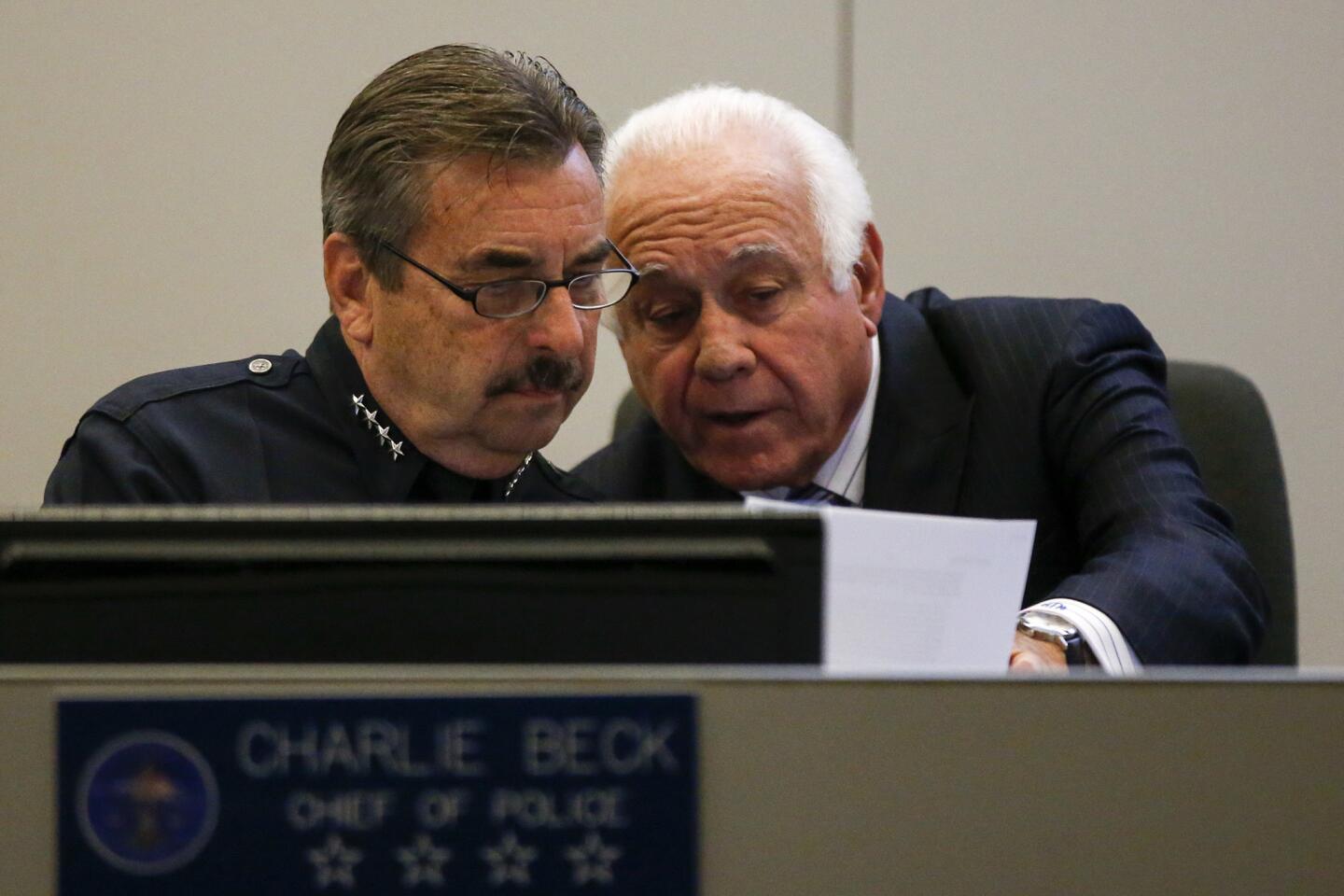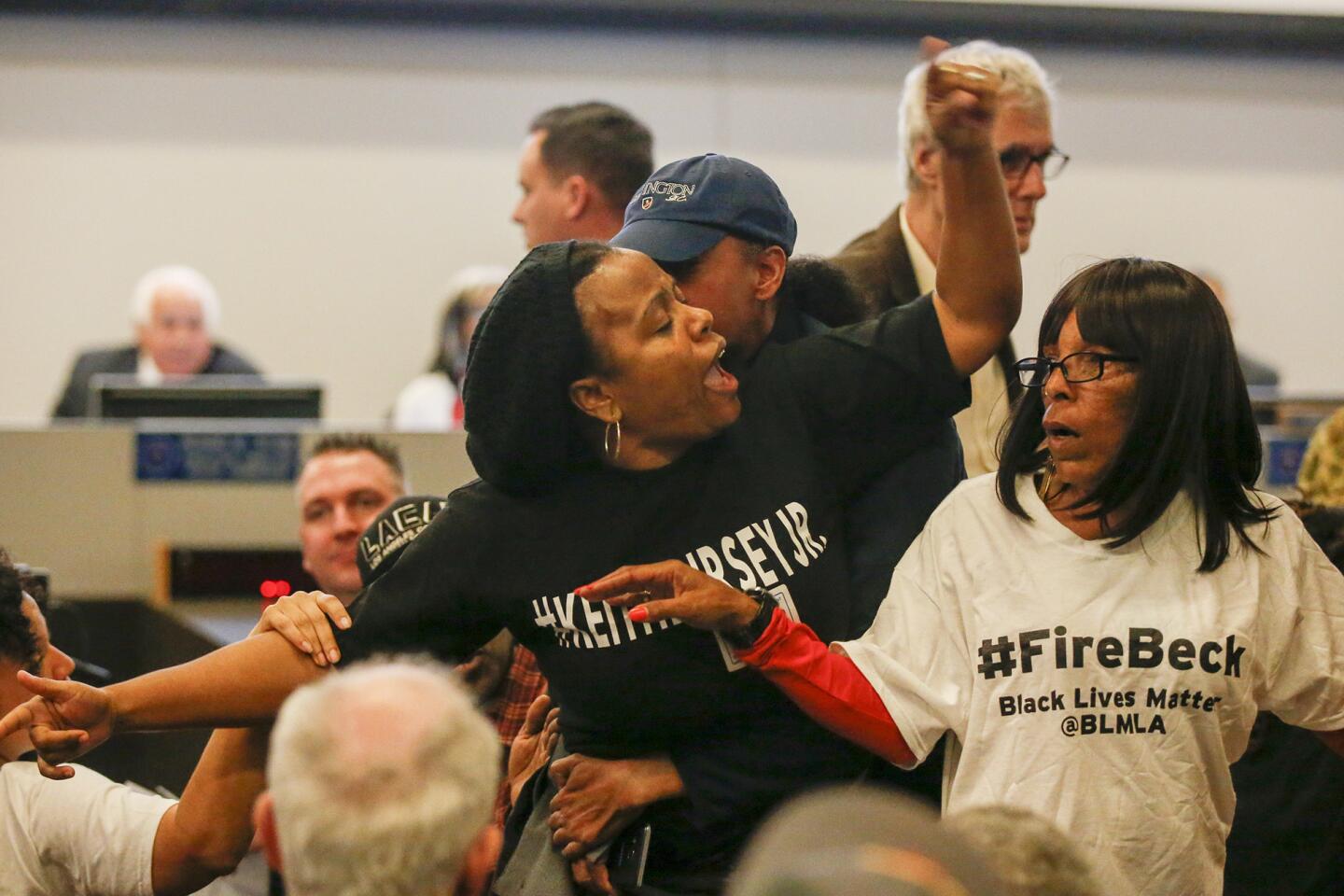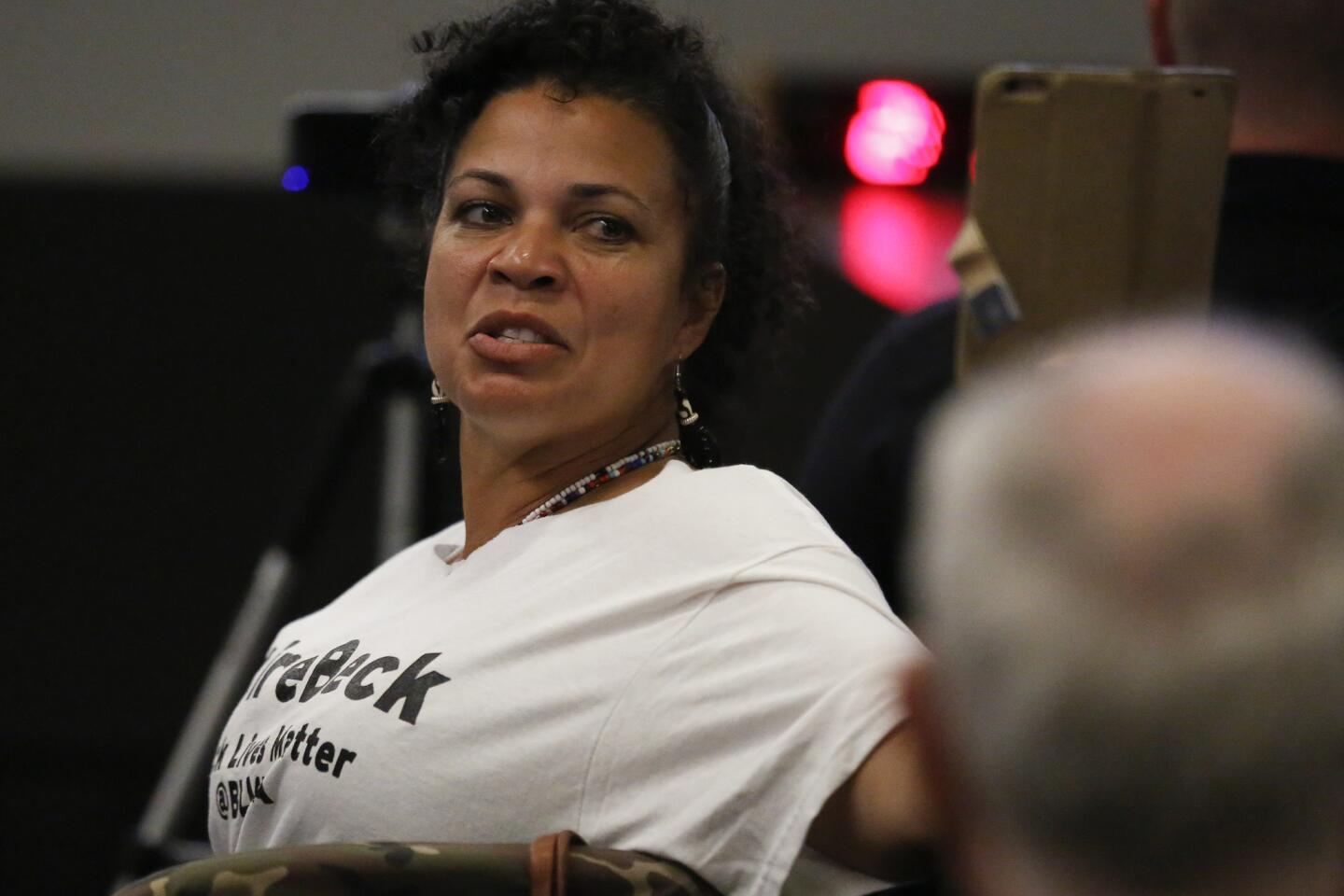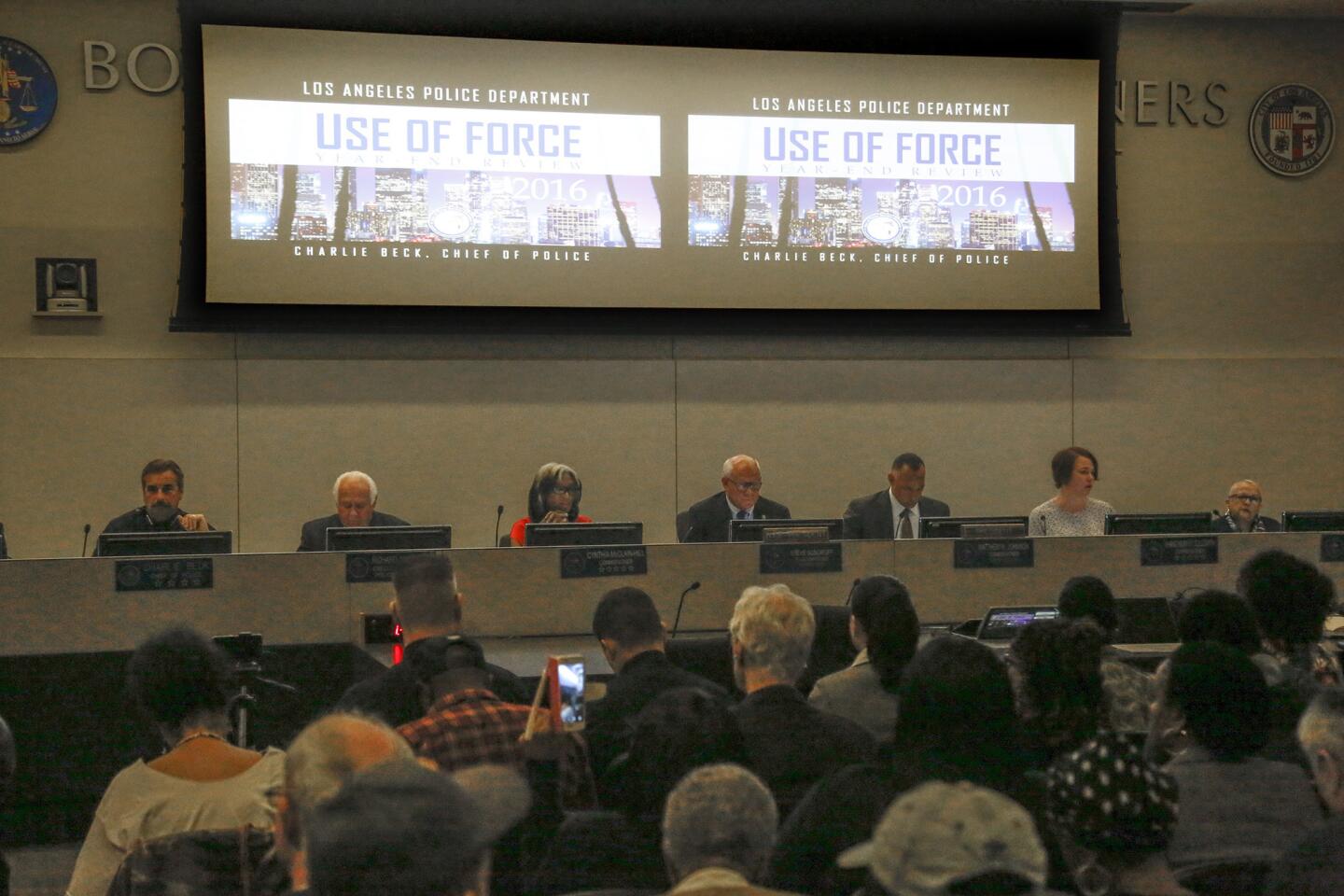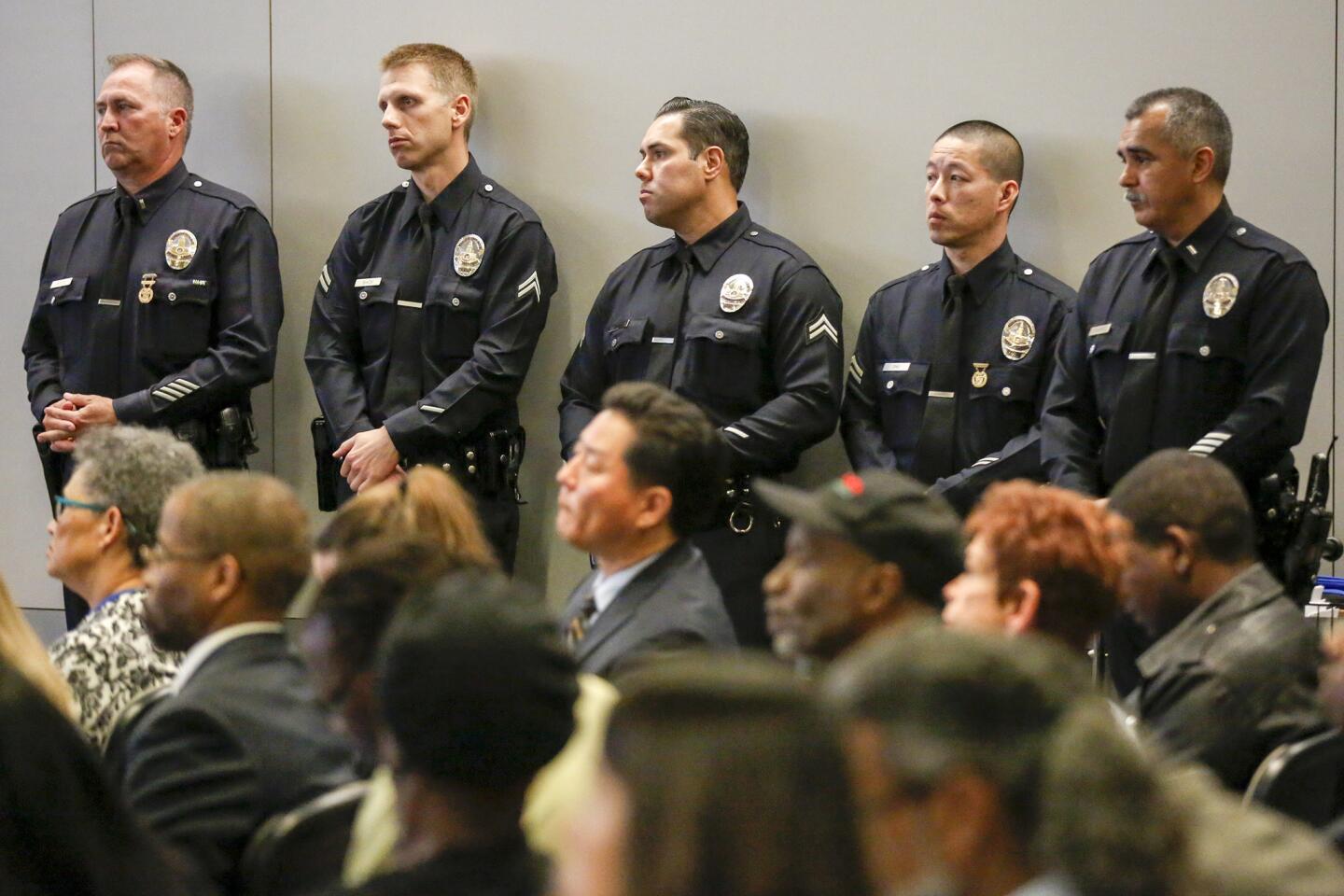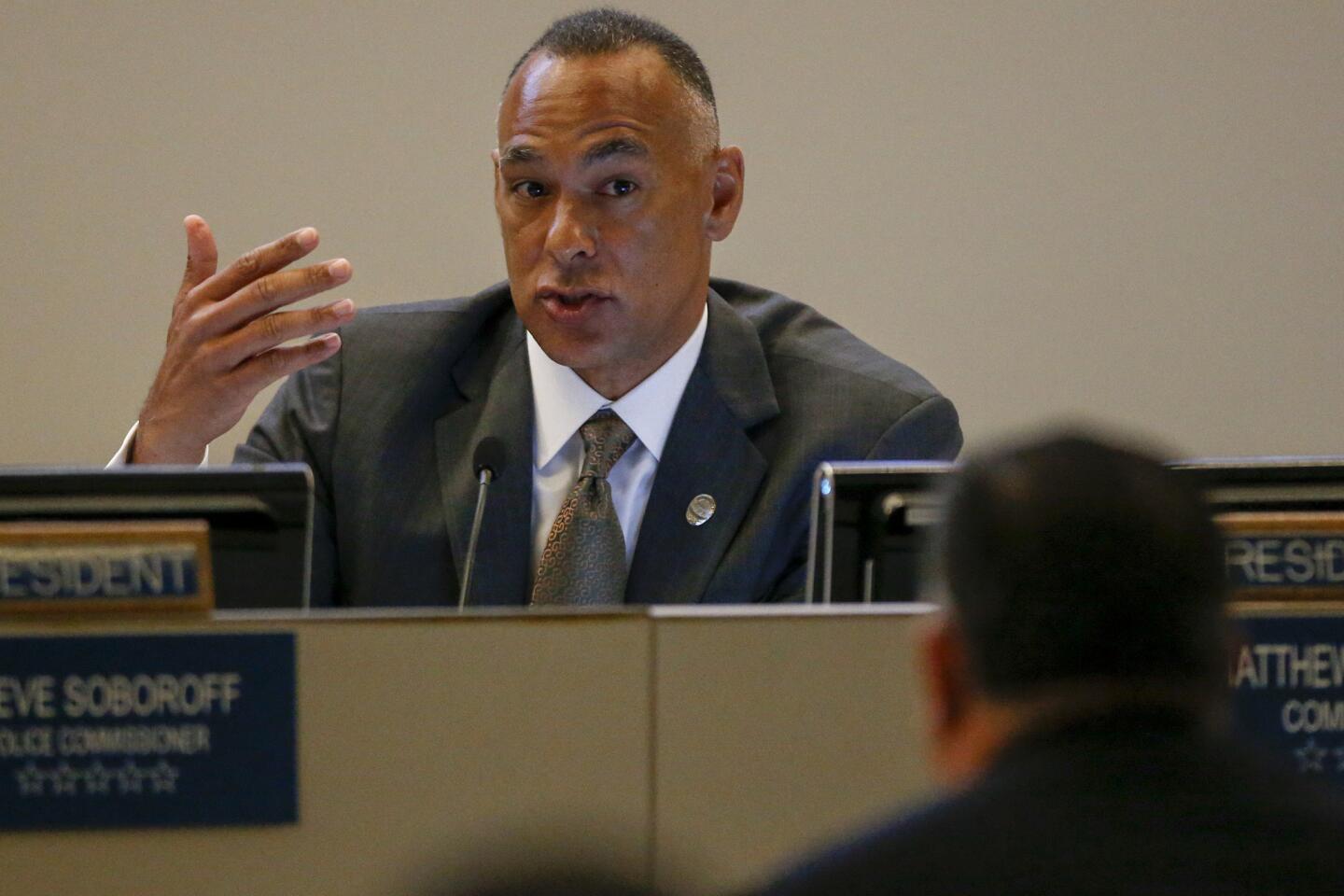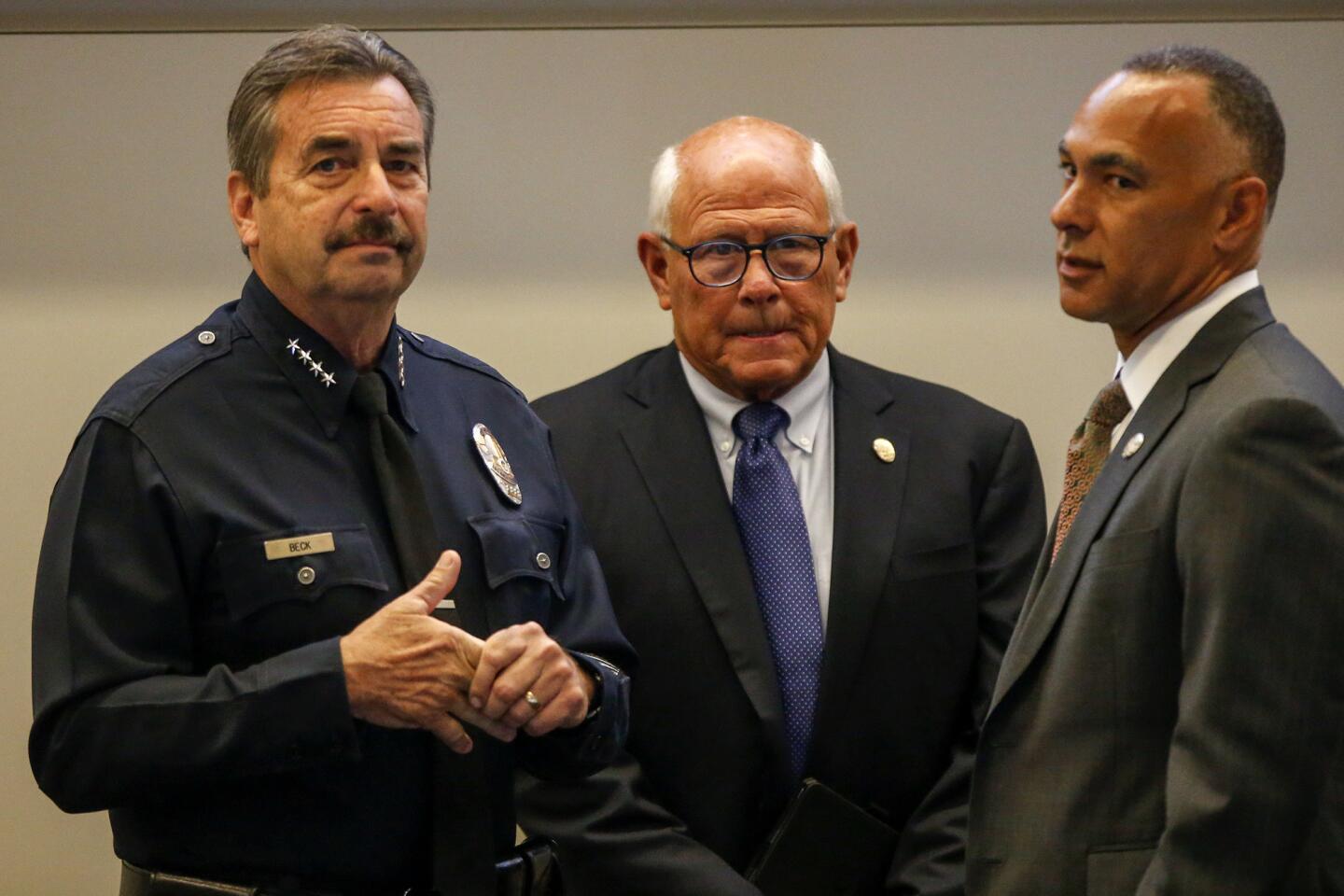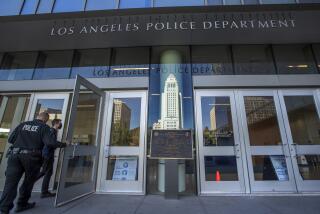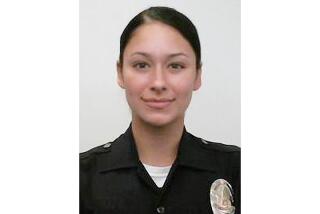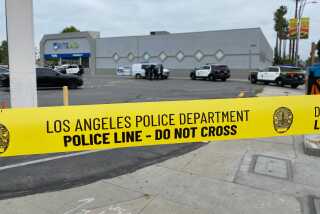Fewer shootings by police — that’s the goal of new rules adopted by the L.A. Police Commission
The Los Angeles Police Commission voted Tuesday to require officers to try, whenever possible, to defuse tense encounters before firing their guns — a policy shift that marks a significant milestone in the board’s attempts to curb shootings by police.
The new rules formally incorporate a decades-old concept called “de-escalation” into the Los Angeles Police Department’s policy outlining how and when officers can use deadly force. As a result, officers can now be judged specifically on whether they did all they could to reduce tensions before resorting to their firearms.
The revised policy — approved at a meeting where activists denounced the fatal police shooting of a 31-year-old man in South L.A. last summer — tells officers they must try to de-escalate a situation “whenever it is safe and reasonable to do so” by taking more time to let it unfold, moving away from the person and trying to talk to him or her, and calling in other resources.
Tuesday’s unanimous vote is the culmination of a series of changes the Police Commission has made to reduce shootings by officers. For almost two years, the civilian board has pushed LAPD brass to provide officers with less-lethal weapons and more training that emphasizes avoiding force whenever possible.
“This policy represents one of those key changes,” said Matt Johnson, the board’s president. “It reaffirms the commission’s and the department’s commitment to de-escalating incidents without compromising officers’ safety or their ability to safeguard the community.”
LAPD Chief Charlie Beck said the new rules would further embed the concept of de-escalation within the department.
“Hopefully that will result in more lives saved,” he said.
The union representing the LAPD’s rank and file said the revised policy allows officers to protect themselves as well as the public.
“Preserving innocent lives and de-escalating dangerous situations has always been, and will continue to be, a core value for Los Angeles police officers,” the union said.

The new rules formally incorporate a decades-old concept called “de-escalation” into the Los Angeles Police Department’s policy outlining how and when officers can use deadly force.
Not everyone backed the new policy, however. The American Civil Liberties Union sent the commission a letter before Tuesday’s meeting expressing concern that the revisions did not go far enough to explicitly state that de-escalation will be considered when determining whether an officer’s use of force was reasonable.
Without such language, the ACLU urged commissioners to “refuse to accept the proposed revisions as complete.”
One commissioner, Cynthia McClain-Hill, echoed some of the concerns noted in the letter, although she ultimately voted for the change.
LAPD brass, as well as the board’s inspector general, said the new policy does allow commissioners to consider whether an officer tried to defuse a confrontation when they decide whether a shooting was justified or not. De-escalation, they said, will now be part of the review of whether an officer’s actions before a shooting contributed to the decision to pull the trigger.
As criticism of policing flared across the country, particularly after deadly shootings by officers, law enforcement agencies looked to de-escalation as a way to help restore public trust. Like the LAPD, other departments have emphasized the approach in training and policies.
The Seattle Police Department requires officers to attempt de-escalation strategies, such as trying to calm someone down verbally or calling a mental health unit to the scene. Santa Monica police have similar rules in place, telling officers to try to “slow down, reduce the intensity or stabilize the situation” to minimize the need to use force.
The focus on de-escalation represents a broader shift in law enforcement, said Samuel Walker, a retired criminal justice professor and expert in police accountability. Now, he said, there’s an understanding that officers can shape how an encounter plays out.
“This is absolutely the right thing to do,” he added.
The move comes after a year in which the Police Commission ruled eight shootings by LAPD officers were unjustified — the highest number in at least a decade, according to a Times analysis of nearly 440 shootings reviewed since 2007.
At the same time, The Times found, commissioners more often faulted the tactics officers used before a shooting, such as forgetting to carry a Taser or splitting from a partner during a foot chase. Last year, the panel decided there were tactical errors in 50% of the 46 shootings it reviewed, up from 32% the year before.
But the panel has faced some criticism over police shootings from activists who regularly attend their meetings. On Tuesday, dozens gathered to protest the 2016 killing of Keith Bursey outside a liquor store in South L.A.
The LAPD said Bursey was shot after police patted him down and felt a gun in his waistband. Bursey ran and then reached for his waistband, the department said, prompting an officer to shoot.
His family and friends made emotional appeals to the panel, questioning why officers stopped him and saying they did not believe that he was armed. Mary Williams, Bursey’s grandmother, urged police not to target black men.
“How can we educate the police officers, as opposed to militarizing the community and harassing young black males?” she said.
Later, commissioners unanimously decided the officer was justified in shooting Bursey, but they faulted the tactics he and his partner used beforehand. In his report to the commission, Beck took issue with the officers’ failure to effectively communicate with each other throughout the encounter.
Bursey was one of 19 people killed by LAPD gunfire in 2016, according to a report the department released Tuesday detailing how and when officers used force last year.
The number of shootings by LAPD officers fell in 2016 to 40 from 48 the year before. The 19 people killed represented a slight decrease from 21 in 2015. Nine people were wounded in 2016, eight fewer than the year before.
In more than half of the shootings last year, police shot at someone who had a gun, according to the LAPD’s report. Four more involved someone with a replica or pellet gun. Five others involved knives or some other type of edged weapon.
There were also signs that some troubling trends continued into 2016.
African Americans continue to represent a disproportionate number of the people shot at by officers. Nearly a third of the people shot at last year were black — a 7% increase from 2015. Black people make up about 9% of the city’s population but 40% of homicide victims and 43% of violent crime suspects, the report noted.
The LAPD also topped a list of big-city agencies with the highest number of deadly shootings by officers. Police in Los Angeles fatally shot more people than officers in Chicago, New York, Houston and Philadelphia did, the report said. The L.A. County Sheriff’s Department came in second, with 15 deadly shootings.
The number of incidents involving less-serious forms of force — such as when an officer grabs someone or uses a less-lethal device — rose by 100 last year, to 1,925. Officers used Tasers in 573 of those encounters — about 50 more times than in 2015.
The report outlined the efforts the LAPD has made in recent months to reduce police shootings: More Tasers have been deployed, and supervisors and officers with other less-lethal devices are now required to respond to calls reporting people armed with edged weapons.
More officers have also been assigned to mental health units, and supervisors must respond to calls with people who may be mentally ill. Only four of the people shot at last year showed signs of mental illness, a significant drop from 2015, when nearly a third of the 48 people fired upon showed such indications.
Capt. John McMahon, whose office compiled the report, said there were signs the LAPD’s efforts are having an effect. He noted that fewer shootings involved people who were mentally ill or who had weapons other than guns.
McMahon said the LAPD would evaluate each shooting to ensure officers were correctly trying to de-escalate a situation.
“If not, then we’ve got other issues we’ve got to deal with,” he said. “But I think when properly employed, according to our training, we will expect to see a reduction in those types of incidents that can be avoided.”
For more LAPD news, follow us on Twitter: @katemather and @cindychangLA
UPDATES:
8:00 p.m.: This article was updated with details about the commission meeting, the shooting of Keith Bursey and comments from McMahon.
1:03 p.m.: This article was updated with information from the LAPD’s report on how and when officers used force in 2016.
This article was originally published at 12:05 p.m.
More to Read
Sign up for Essential California
The most important California stories and recommendations in your inbox every morning.
You may occasionally receive promotional content from the Los Angeles Times.
